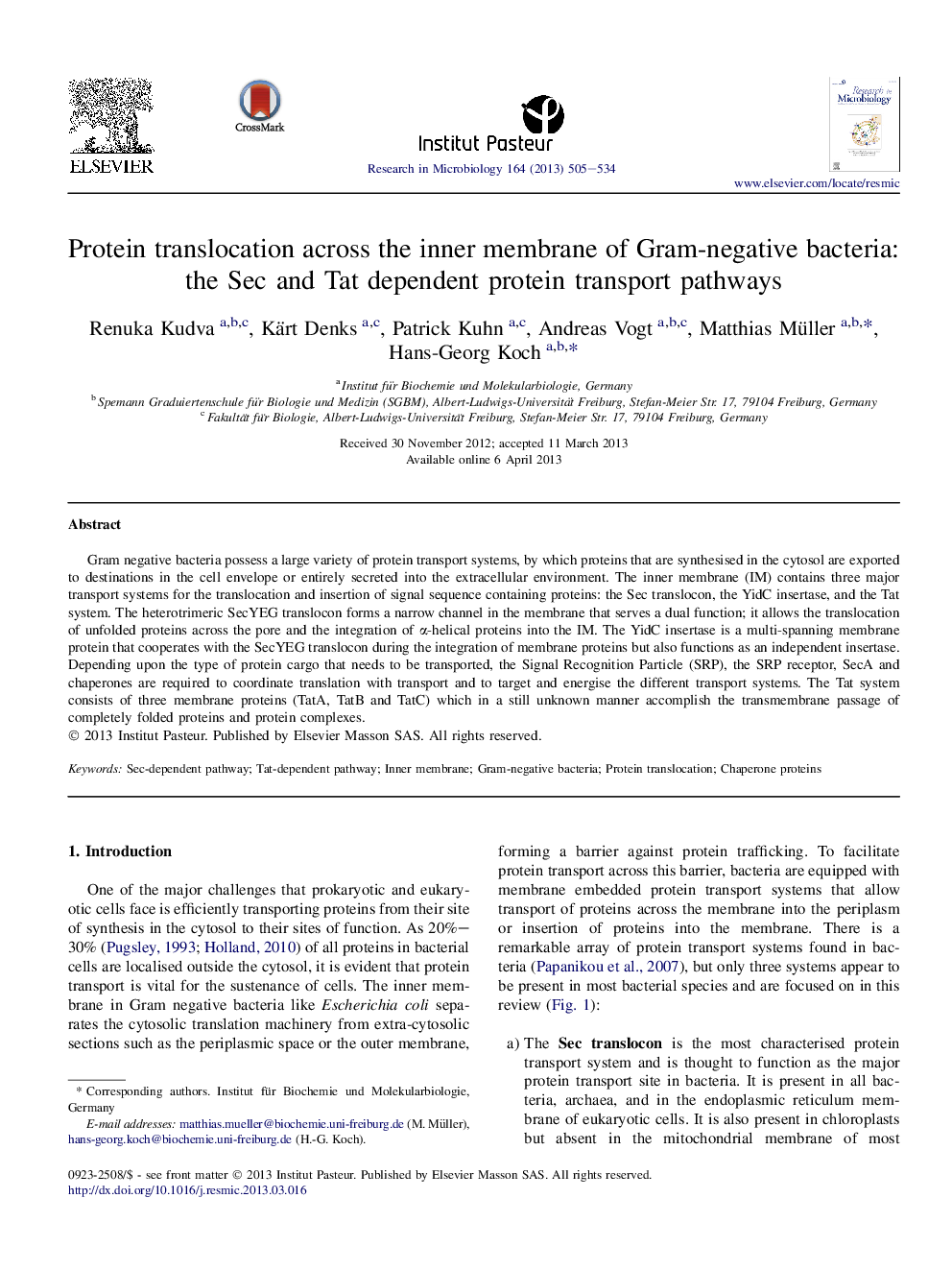| Article ID | Journal | Published Year | Pages | File Type |
|---|---|---|---|---|
| 4358529 | Research in Microbiology | 2013 | 30 Pages |
Gram negative bacteria possess a large variety of protein transport systems, by which proteins that are synthesised in the cytosol are exported to destinations in the cell envelope or entirely secreted into the extracellular environment. The inner membrane (IM) contains three major transport systems for the translocation and insertion of signal sequence containing proteins: the Sec translocon, the YidC insertase, and the Tat system. The heterotrimeric SecYEG translocon forms a narrow channel in the membrane that serves a dual function; it allows the translocation of unfolded proteins across the pore and the integration of α-helical proteins into the IM. The YidC insertase is a multi-spanning membrane protein that cooperates with the SecYEG translocon during the integration of membrane proteins but also functions as an independent insertase. Depending upon the type of protein cargo that needs to be transported, the Signal Recognition Particle (SRP), the SRP receptor, SecA and chaperones are required to coordinate translation with transport and to target and energise the different transport systems. The Tat system consists of three membrane proteins (TatA, TatB and TatC) which in a still unknown manner accomplish the transmembrane passage of completely folded proteins and protein complexes.
